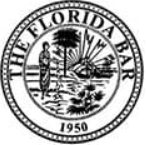When you purchase residential real estate, you have to ensure the safety of the property. A common, unseen danger in some properties happens to be former meth labs. Most meth labs spring up in homes and other settings rather than in organized, super labs.
According to IFL Science, meth can linger in a former lab for up to five years.
Dangers of previous meth labs
Living in a former meth lab can be dangerous for homeowners or tenants. Those living in a space where someone cooked meth previously may suffer from sore eyes, dizziness, rashes, persistent coughs and blurred vision. Some people may even experience anxiety, difficulty sleeping and excess energy.
You can typically find the highest amounts of meth on plastic blinds, varnished timber or objects made from PVC or polyurethane.
Signs of a previous meth lab
Meth labs spring up in apartment complexes, homes, RVs, trailers and other domestic settings. One of the biggest giveaways of a former meth lab is the smell. Former labs smell punchy like window cleaner, burnt plastic or ammonia.
Often, people cook meth using everyday household cleaners, cold medicines, salt, iodine, matches, batteries, paint thinner and other household chemicals. If you find a high quantity of these ingredients in the attic or basement of the home, it may be a sign that meth cooks once lived on the property.
Additionally, the U.S. Drug Enforcement Administration has a database that shows all labs discovered by law enforcement. Unfortunately, there are labs police may never bust and go undetected.
You can use a methamphetamine residue detection kit or discuss your options with a drug lab cleanup company for proof.







